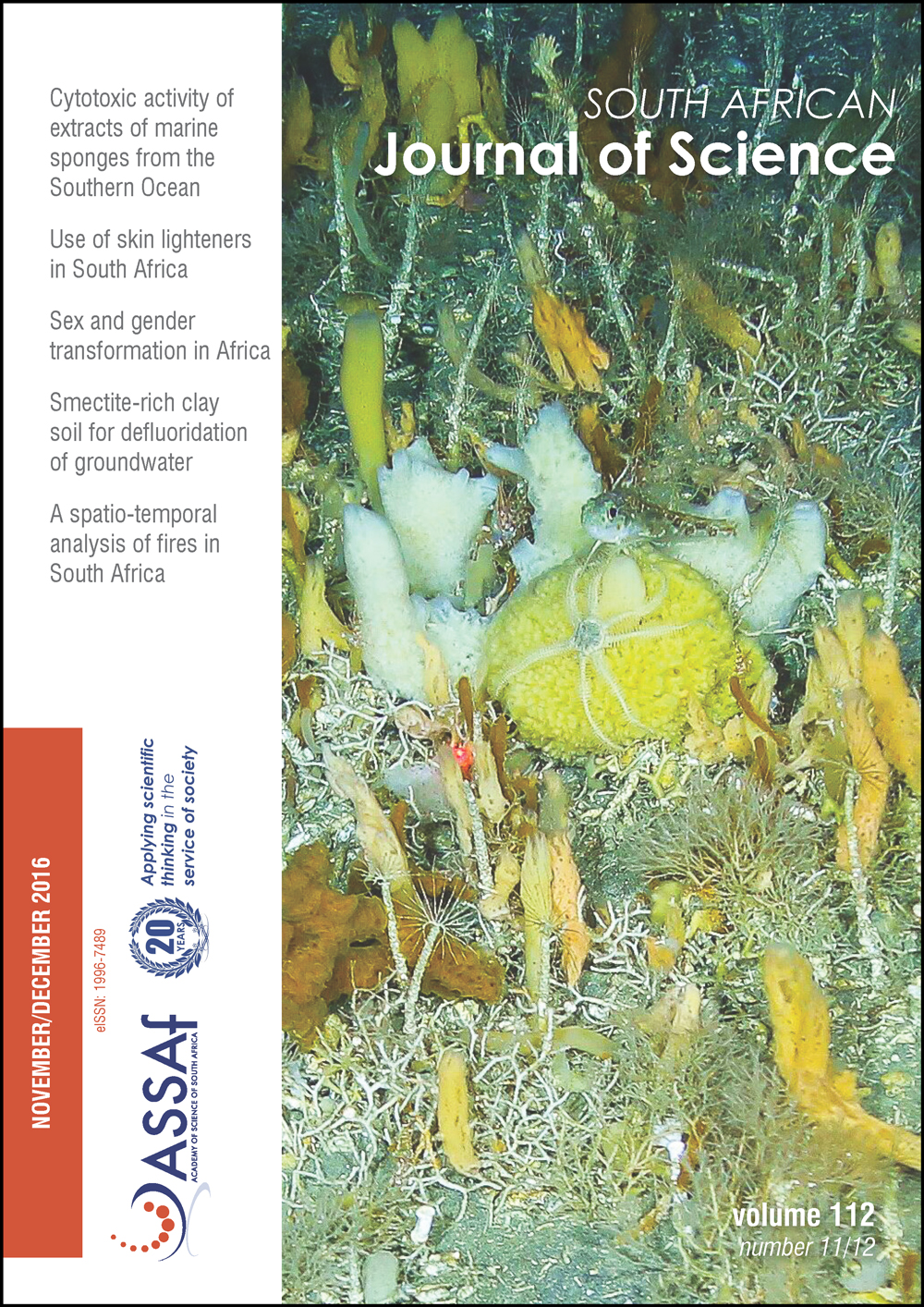Characterisation of smectite-rich clay soil: Implication for groundwater defluoridation
DOI:
https://doi.org/10.17159/sajs.2016/20150442Keywords:
fluoride, pH, adsorption isotherms, batch experimentsAbstract
Groundwater is a widely used and affordable source of drinking water in most of the rural areas of South Africa. Several studies have indicated that groundwater in some boreholes in South Africa has a fluoride concentration above the level recommended by the World Health Organization (1.5 mg/L). Fluoride concentrations above the permissible limit (>1.5 mg/L) lead to dental fluorosis, with even higher concentrations leading to skeletal fluorosis. In the present work, we evaluate the application of smectite-rich clay soil from Mukondeni (Limpopo Province, South Africa) in defluoridation of groundwater. The clay soil was characterised by mineralogy using X-ray diffraction, by elemental composition using X-ray fluorescence and by morphology using scanning electron microscopy. Surface area and pore volume was determined by the Brunauer–Emmett–Teller surface analysis method. Cation exchange capacity and pHpzc of the soil were also evaluated using standard laboratory methods. Batch experiments were conducted to evaluate and optimise various operational parameters such as contact time, adsorbent dose, pH and initial adsorbate concentration. It was observed that 0.8 g/100 mL of smectite-rich clay soil removed up to 92% of fluoride from the initial concentration of 3 mg/L at a pH of 2 with a contact time of 30 min. The experimental data fitted well to a Langmuir adsorption isotherm and followed pseudo second order reaction kinetics. Smectite-rich clay soil showed 52% fluoride removal from field groundwater with an initial fluoride concentration of 5.4 mg/L at an initial pH of 2 and 44% removal at a natural pH of 7.8. Therefore smectite-rich clay soil from Mukondeni has potential for application in defluoridation of groundwater. Chemical modification is recommended to improve the defluoridation capacity.
Significance:- Physicochemical and mineralogical characterisation of smectite-rich clay soil
- Defluoridation of groundwater using smectite-rich clay soil
- Adsorption modelling using adsorption isotherms and kinetic models
Published
Issue
Section
License

All articles are published under a Creative Commons Attribution 4.0 International Licence
Copyright is retained by the authors. Readers are welcome to reproduce, share and adapt the content without permission provided the source is attributed.
Disclaimer: The publisher and editors accept no responsibility for statements made by the authors
How to Cite
- Abstract 584
- PDF 535
- EPUB 200
- XML 243












.png)